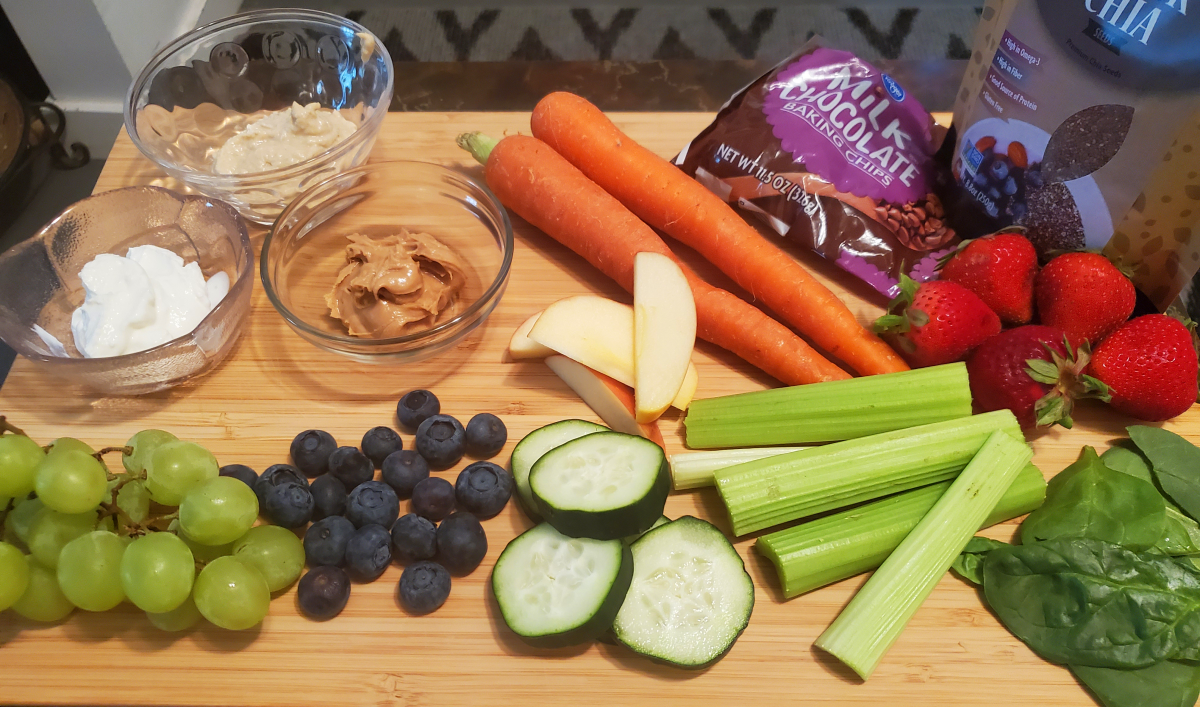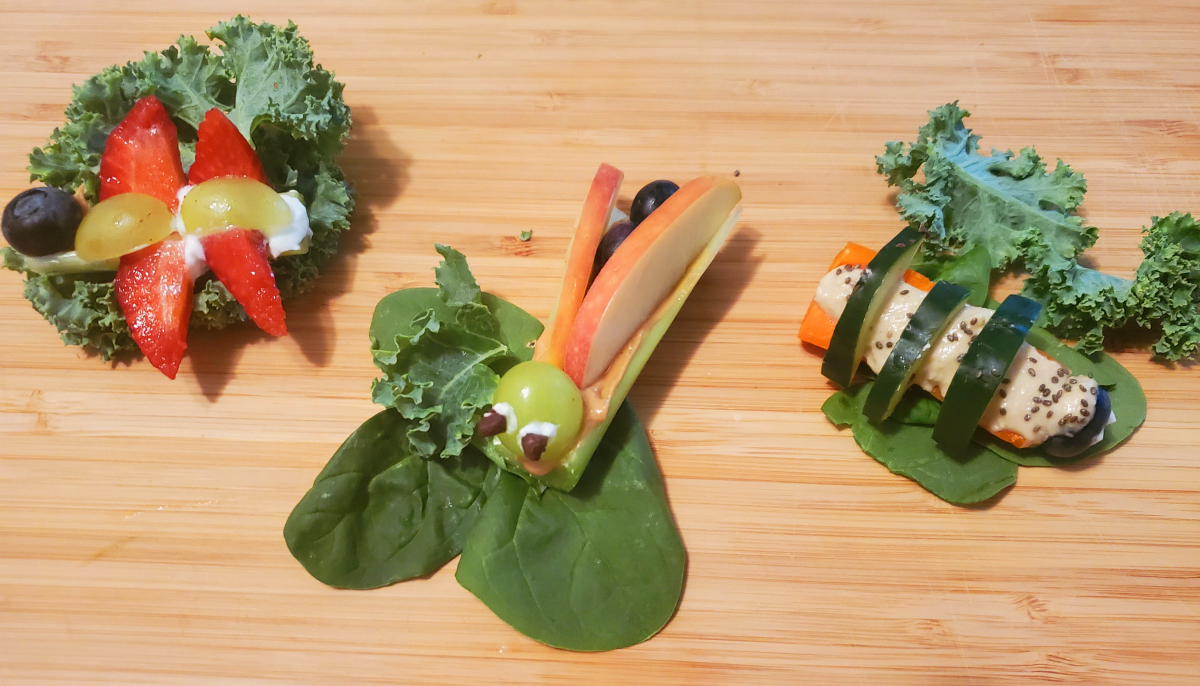Edible Art

Getting kids involved with snack and lunch can bring enjoyment and familiarity with cooking basics to the whole family! It also supports fine motor skill development, encourages healthy eating habits, and gives kids a creative outlet as they conjure up delectable designs they get to eat.
 What You Need
What You Need
We like to use what things we already have. We find this is a great way to use leftovers or finish off those small quantities of food that are almost gone. However, this can also be a fun way to introduce new foods to your child, adding in a new ingredient with ones they are familiar with to try.
Some foods we like to use include:
-
Fruits like berries, cucumbers, bananas, raisins, olives, and apples
-
Vegetables like celery, carrots, bell peppers, and leafy greens
-
Spreads such as nut butters, yogurt, hummus – these make great ‘glue’ for your creations
-
And more! Pretzels, meat sticks or slices, cheese, cereals, seeds like chia or pumpkin, and maybe even chocolate or yogurt chips are all great media for creating with.
Making Edible Art
1. Cut and Slice
Cut ingredients in different lengths and shapes to give kids variety to make their creations. To encourage fine motor skill development, consider letting kids practice (with your help!) using knives to chop. If you have them, small shaped cookie and veggie cutters are also great tools to use (we use them with our cheese and meat slices too!).
2. Setup Your Creation Station
Borrowing from the French concept of mise en place (a culinary phrase meaning “putting in place”) set up a spread with the yummy elements. This might be setting out all the ingredients on the counter, organizing them on a cutting board, or in bowls. We find a muffin tin or silicone ‘egg bite’ tray is a great place to organize cut fruits and veggies, cereals, and to portion out small amounts of spread. If there is food left, they can be easily covered and used again.
3. Create
We made bugs, but the sky is the limit! While you create, try asking your child questions about their designs to encourage them to express their imaginative thought process. Some questions we discussed included:
- Do you have a favorite animal?
- How many legs does it have?
- Does your bug fly or crawl?
4. Time to Eat!

Enjoy Eating!
Incorporating your child into the daily routine can be a great tool to model and practice important skills like cooking and preparing food, engage them creatively, and even alleviate stress! Hands-on activities like this also help them practice fine motor skills and creative self-expression.
